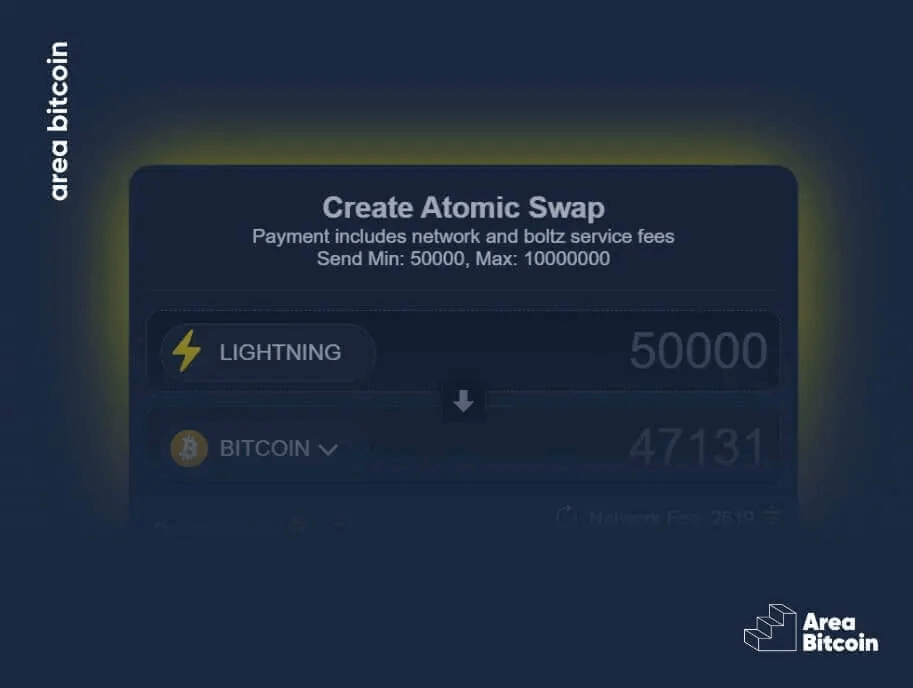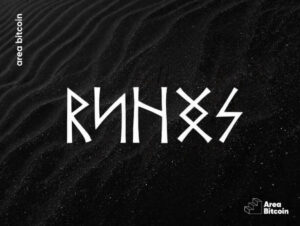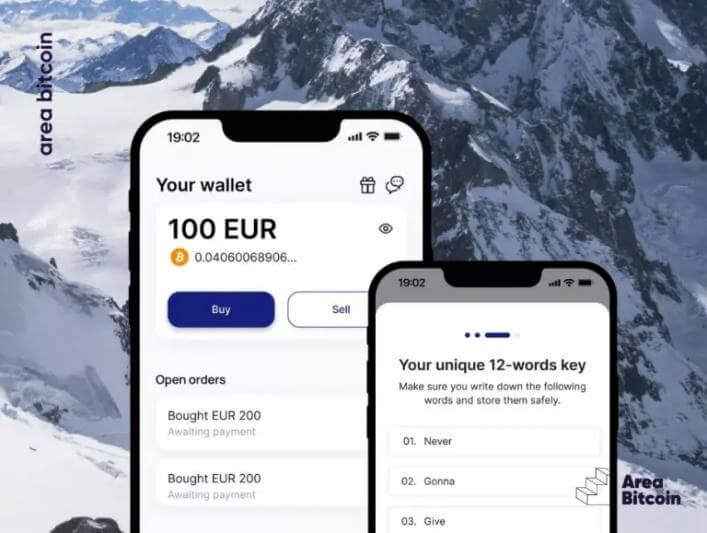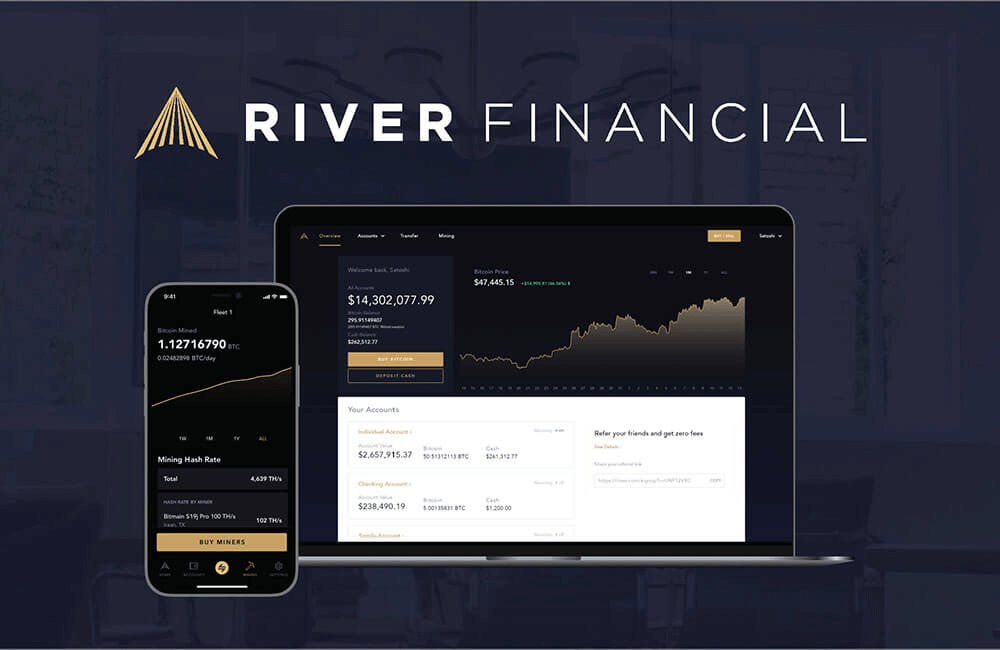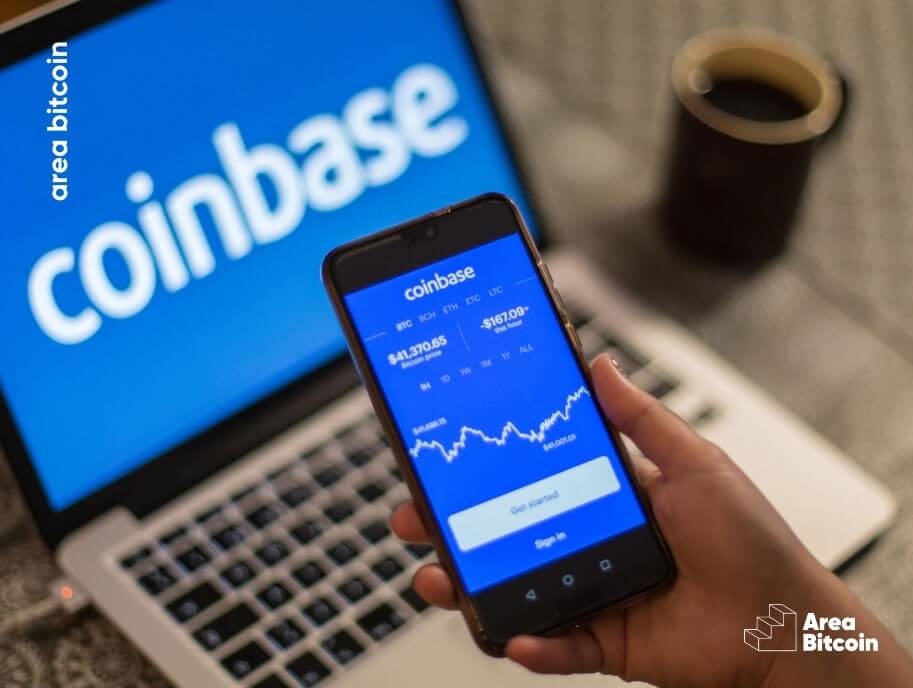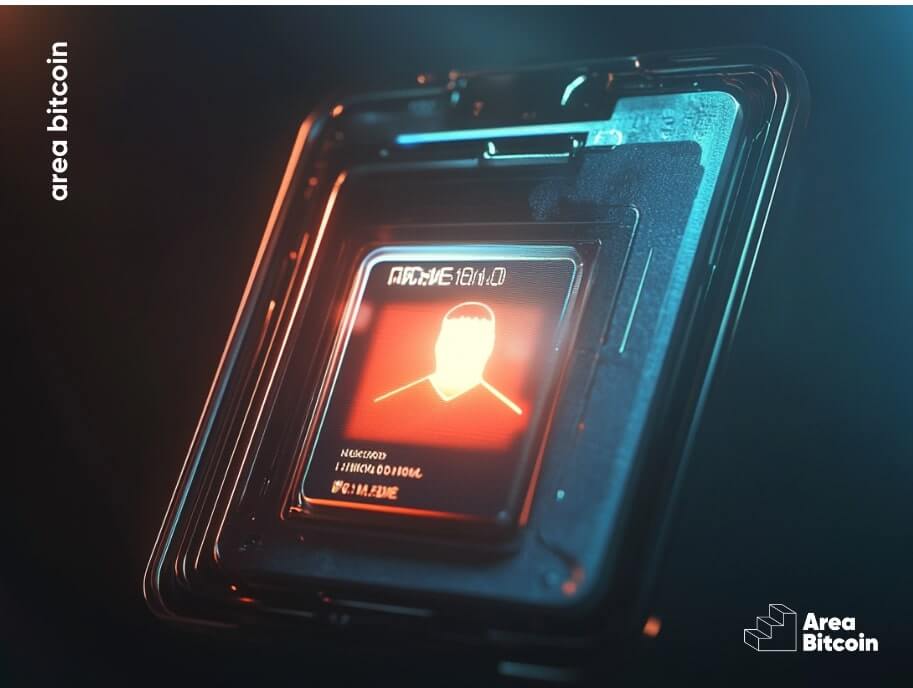If you are looking for a non-custodial platform to make exchanges between the different layers of Bitcoin, Boltz is ideal for you. In this article, we will understand what the Boltz Exchange is and how it works.
In the last articles here on the blog, we showed you some platforms to buy Bitcoin with more security and privacy, such as Azteco. However, this time, we are going to show you a non-custodial exchange platform, Boltz!
Boltz Exchange is an ideal platform for anyone who wants to exchange bitcoins between the existing layers:
- On-Chain
- Lightning
- and Liquid
We often want to transfer BTC from one network to another, but exchanges and wallets offering this service are still rare today. Therefore, Boltz Exchange appears precisely for this purpose.
In this article, you will better understand Boltz and its workings.
Table of Contents
Why transition between layers?
One of Bitcoin’s biggest evolutions was that it scaled in layers.
But how so?
Well, we know that Bitcoin in its main layer (on-chain) has some limitations: transactions occur in an average of 10 minutes, fees are usually higher, and often, the main layer does not meet all the needs of users.
However, this in itself is not a problem, in fact, it is what makes the network so secure. Cause the layer one, on-chain, was made to be secure and decentralized. Fast and cheap transactions take place in other layers of the protocol.
For those who need to transact small amounts on a daily basis, some satoshis (fractions of bitcoin), using the main network can be costly and time-consuming. Furthermore, it is a bit complicated to insert other financial instruments directly into the main Bitcoin layer.
Other layers were created to meet the demands of these users and bring them to Bitcoin, such as the Lightning network, which allows you to transact Bitcoin quickly and with fewer fees on a daily basis, and the Liquid Network, which serves as a way to use various financial instruments based on Bitcoin.
That said, the importance of transitioning in layers is precisely to provide this flexibility so that the user can take advantage of everything that Bitcoin has to offer. However, although today there are several wallets for each functionality, not all of them have integrations for exchanges between networks.
That’s where Boltz comes in, as a non-custodial way for users to transfer bitcoins between layers super easily, through atomic swaps.
Oops, a new term came up here! But don’t worry, I’ll explain it.
What are Atomic Swaps?
Atomic Swaps are direct exchanges between different layers, without the need for intermediaries, using scripts (smart contracts on Bitcoin) to guarantee the secure and simultaneous execution of transactions.
Generally, when exchanging one currency for another, the parties involved in the negotiation must trust a third party, which is usually the broker or wallet where the exchange is being made.
In an exchange of bitcoins between different layers, it is also common to trust a third party to act as an intermediary. In practice, if you want to exchange Bitcoin on-chain for satoshis on Lightning from a Lightning wallet, what happens is that you send Bitcoin to the wallet and it gives you satoshis back. Therefore, in this case, there is a trusted third party mediating the process.
This may be practical, but from a privacy perspective, we have a problem.
Through atomic swaps, which also means “atomic exchanges”, what happens is a completely peer-to-peer exchange, without the intervention of third parties.
Thus, an atomic swap works to ensure that both sides of the negotiation comply with all pre-defined conditions before it is even concluded. Conditions are defined through smart contracts, the same ones created by Nick Szabo.
An atomic swap works with HTLC contracts (Hashed Timelock Contract). In this type of contract, the amount is “locked” in a two-way channel and a time restriction is introduced, where, if the transaction is not completed within a certain period, the balance returns to the depositor. And it is this mechanism that the Boltz platform uses.
What is the Boltz Exchange?
Boltz Exchange is a platform that facilitates Atomic Swaps between different layers of Bitcoin, without the need for intermediaries. Also, it is non-custodial, it is not necessary to create an account and there is no custody of Bitcoin balances.
The way Boltz exchanges between Bitcoin on-chain and satoshis on Lightning is through submarine swaps. Basically, this mechanism is based on atomic swap, however, it is only suitable for Bitcoin networks.
How did Boltz come about?
The Boltz platform emerged in 2019, precisely to mitigate the problem of exchanges between Bitcoin layers. This solution is particularly interesting for new users and traders using Lightning, as you often need to open a Lightning channel and add liquidity to this channel to start using it.
In this case, Boltz is a safe alternative to use Lightning conveniently, without having to open your own channels or having to request the opening of a channel for a Lightning node.
How does Boltz work?
We have already mentioned here that Boltz’s modus operandi is through atomic swaps, so the exchanges are truly peer-to-peer, without the need for a third party, and to use the platform it is not necessary to open an account or enter personal data.
Thus, Boltz serves the three layers of Bitcoin:
- On chain: main layer of the Blockchain, where all transactions are recorded.
- Lightning Network: A second-layer scaling solution that facilitates faster and cheaper Bitcoin transactions.
- Liquid Network: another second layer Bitcoin solution, which allows for more privacy, faster settlement, and financial solutions involving Bitcoin, such as loans and others.
What is the minimum and maximum amount to transact on Boltz?
The maximum and minimum amounts to transact on Boltz depend on the chosen pair, but the overall maximum is 25 million sats (0.25 BTC).
Additionally, Boltz charges a service fee ranging from 0.1% to 0.5%, in addition to network fees. Typically, the fee falls between 0.1% and 0.25%.
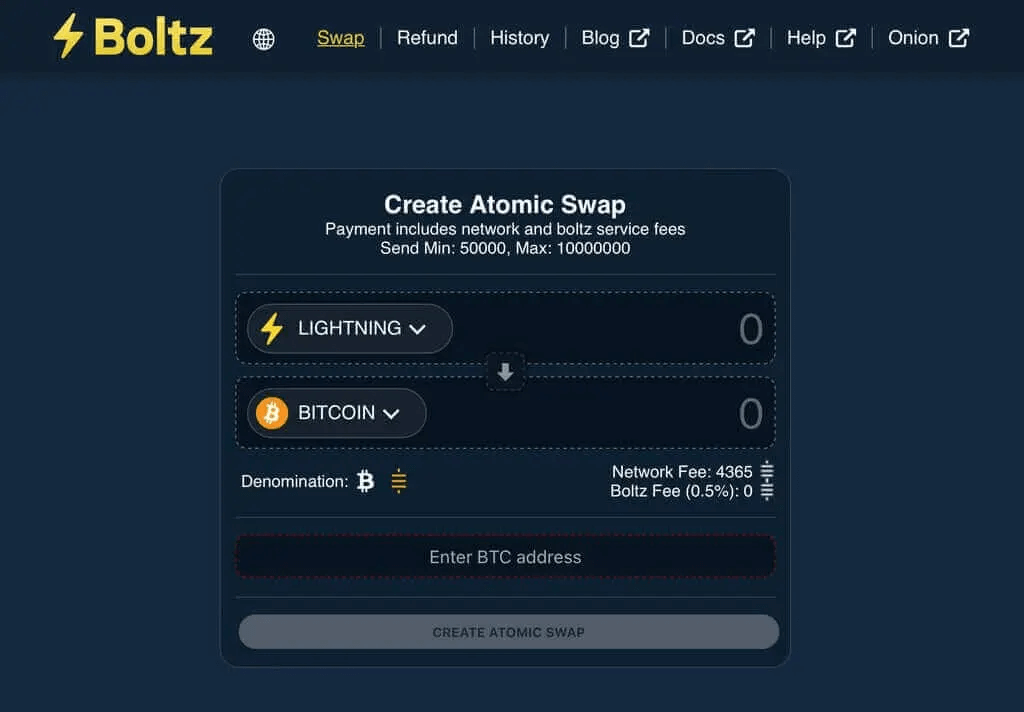
Using Boltz in practice!
The Boltz platform does not have a mobile app and is only used on the web. However, for more privacy, it can be used on the Tor browser as well.
So, here are some important links to start using this platform:
- Onion Address (Tor): http://boltzzzbnus4m7mta3cxmflnps4fp7dueu2tgurstbvrbt6xswzcocyd.onion/
- Official website: https://boltz.exchange/
In this example, we will use the Tor browser for privacy reasons, but you can choose whichever browser you think is best.
Once you have chosen your browser, enter the Boltz website and it will open directly to this page:
Now, select which network (Bitcoin, Liquid or Lightning) you want to receive from, and which network (Bitcoin, Lightning or Liquid) you want to send to:
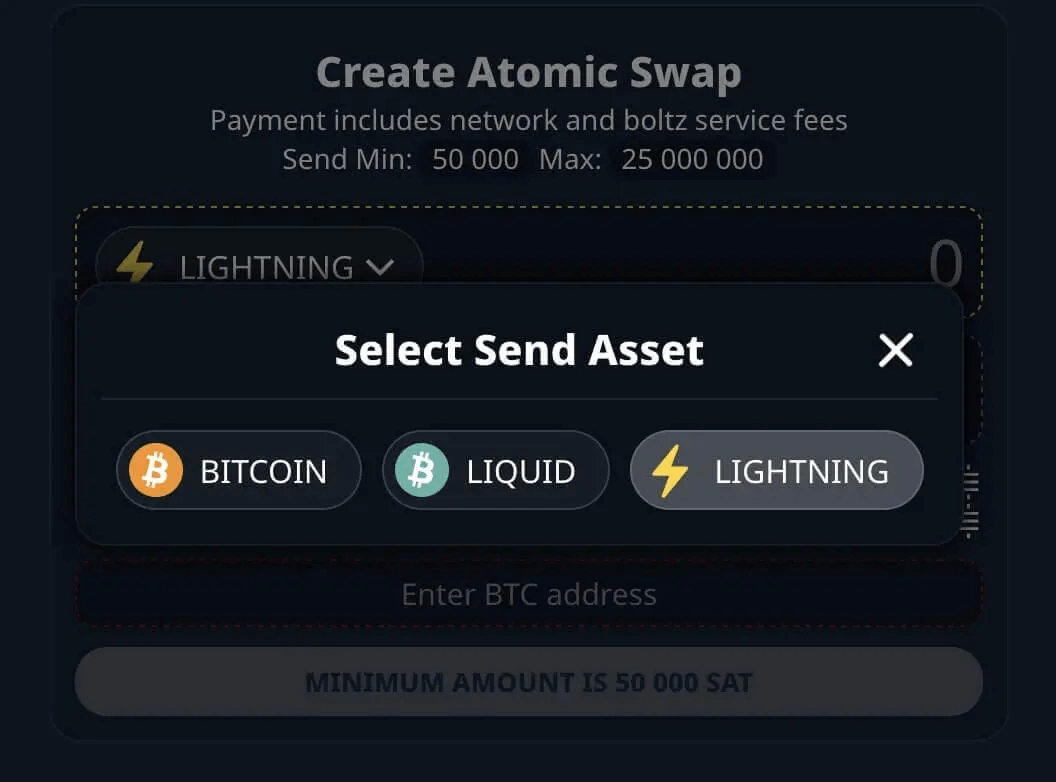
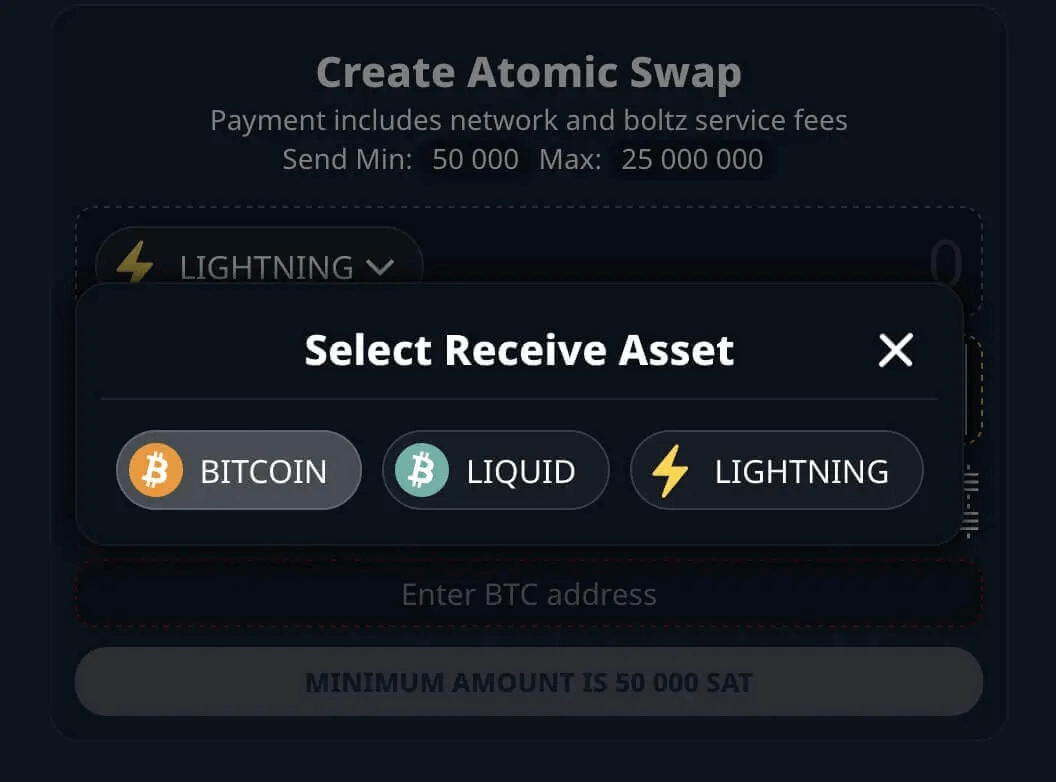
In the bottom left corner of the exchange box, you can select how you want to see the values, whether it is in BTC or in Satoshis:
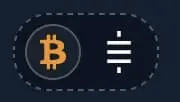
Enter the amount you want to exchange and you will see how much you will receive and the fee charged (both the network and the platform). At the time of this simulation, the network rate was high, as can be seen below:
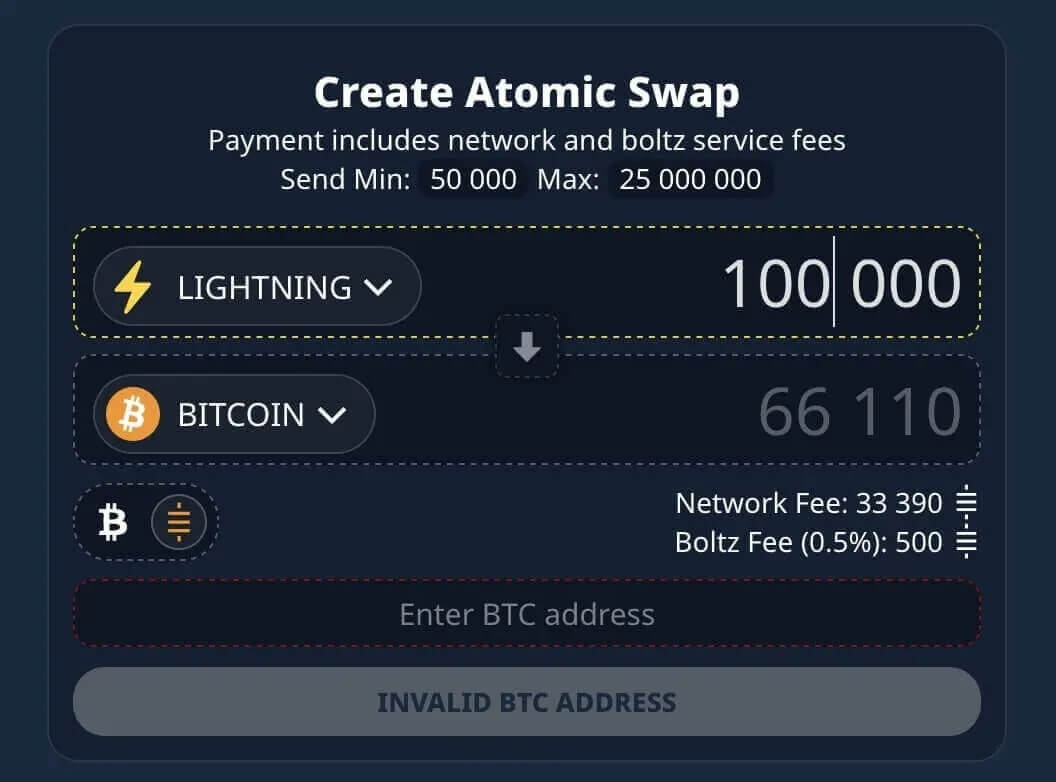
After entering the amounts, you must enter the address to which you want to send the amount.
In the example, since the exchange is from a Lightning to On-Chain address, we will enter an On-Chain address here, and the option to perform the exchange will appear automatically.
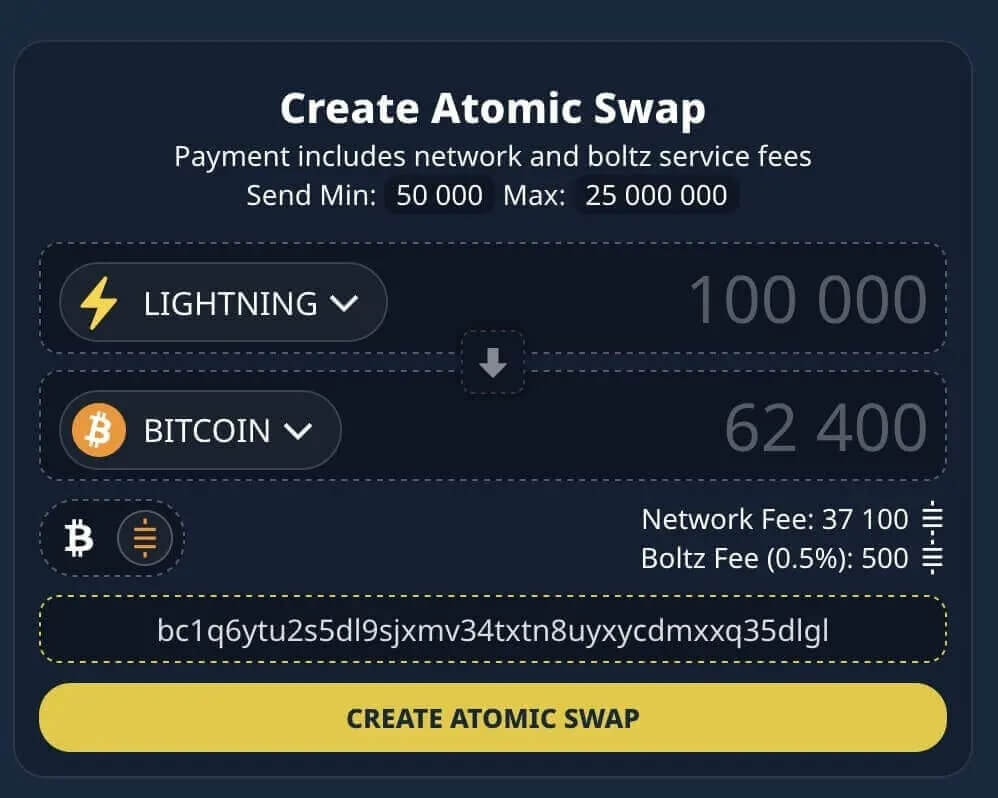
Now just click on “create atomic swap” and you will be taken to the final page:
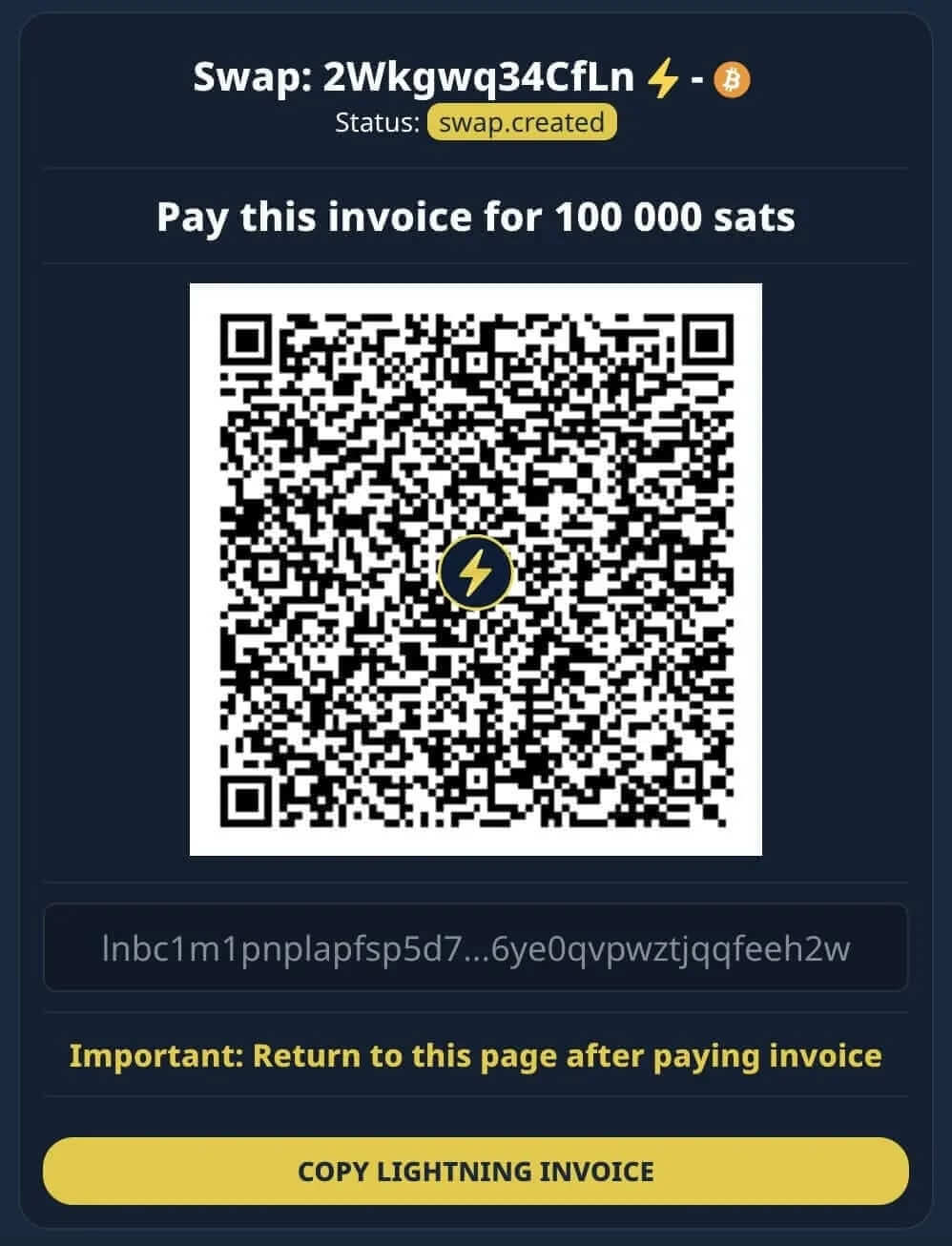
On this page, the payment invoice for the requested exchange will be shown; that is, you will send the satoshis you have in Lightning and receive them in Bitcoin On-Chain.
Pay the invoice and your exchange will be complete. Now, just wait for the amount to arrive in your wallet at the On-Chain receipt address you indicated.
Boltz Pro
In December 2024, Boltz launched Boltz Pro, a service that allows you, as a user, to help it balance liquidity between the Bitcoin blockchain and Lightning channels. Plus, you can earn small amounts of Bitcoin (sats) in the process!
Here’s how it works: as more people use Boltz to swap between Bitcoin and Lightning, the balances in the platform’s wallets and Lightning channels are constantly shifting. With increasing transaction volume and speed, Boltz may occasionally need a little help to rebalance its liquidity. That’s where Boltz Pro comes in.
The concept is simple: when Boltz’s balances run low on one side of the equation—whether it’s Bitcoin on the base blockchain or in Lightning—you can step in to provide liquidity.
And the best part? You get rewarded for your help!
A Practical Example
Let’s say Boltz is running low on liquidity in its Bitcoin wallet on the blockchain. In this case, it adjusts its dynamic fee to -0.15% for swaps from Bitcoin to Lightning. This means that instead of paying a fee, you earn 0.15% for making the swap.
Once enough volume flows in this direction and the Bitcoin wallet is replenished, the fees return to normal.
The best part? You don’t need to sign up to use the service. Simply monitor the website for negative fees and take advantage of the opportunity.
And remember: Boltz never takes custody of your funds. This means you can earn satoshis securely and in a non-custodial way.
Is Boltz a safe platform?
Yes, Boltz Exchange is safe. It is a non-custodial platform, which means users maintain full control over their bitcoins during transactions, reducing the risk of losses due to security breaches.
Furthermore, the exchange also emphasizes privacy, operating without requiring personal identification from users.
Conclusion
See how simple it is? Boltz’s solution is precisely to deliver this simplicity to users who need to exchange between layers, all without having to create an account and with a super-friendly interface.
The fact that it is non-custodial and presents a fast mechanism for exchanges makes this platform an ideal option for users and its use tends to grow more and more, mainly because people are using the second layers of Bitcoin more.
I hope you enjoyed this article and it helped you understand more about Boltz.
Send this article it to a friend who can also discover and benefit from this platform.
Until next time and opt out.
Share on your social networks:

One of the leading Bitcoin educators in Brazil and the founder of Area Bitcoin, one of the largest Bitcoin schools in the world. She has participated in Bitcoin and Lightning developer seminars by Chaincode (NY) and is a regular speaker at Bitcoin conferences around the world, including Adopting Bitcoin, Satsconf, Bitcoin Atlantis, Surfin Bitcoin, and more.
Did you like this article? Consider buying us a cup of coffee so that we can keep writing new content! ☕

